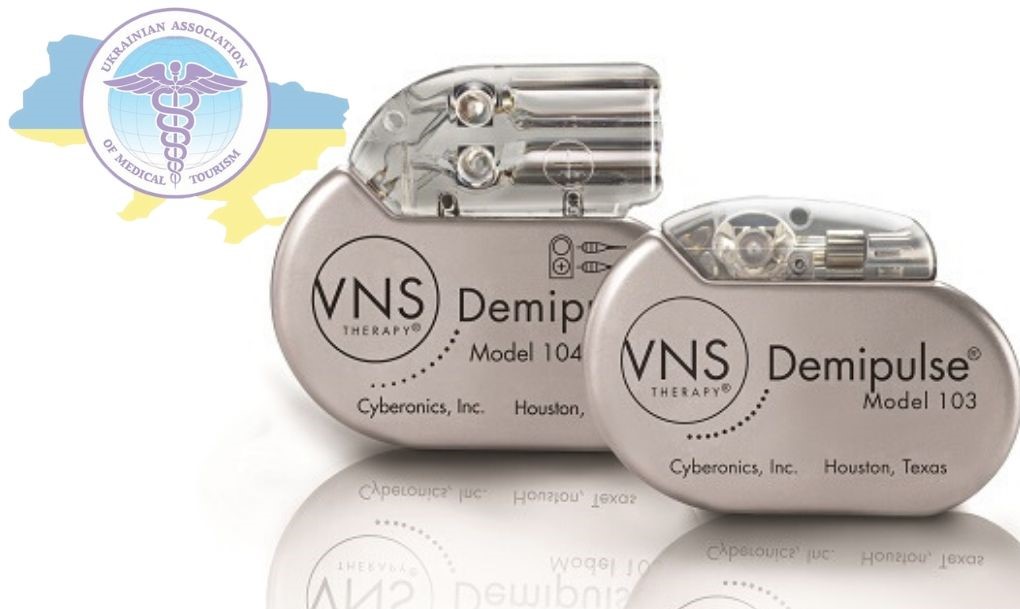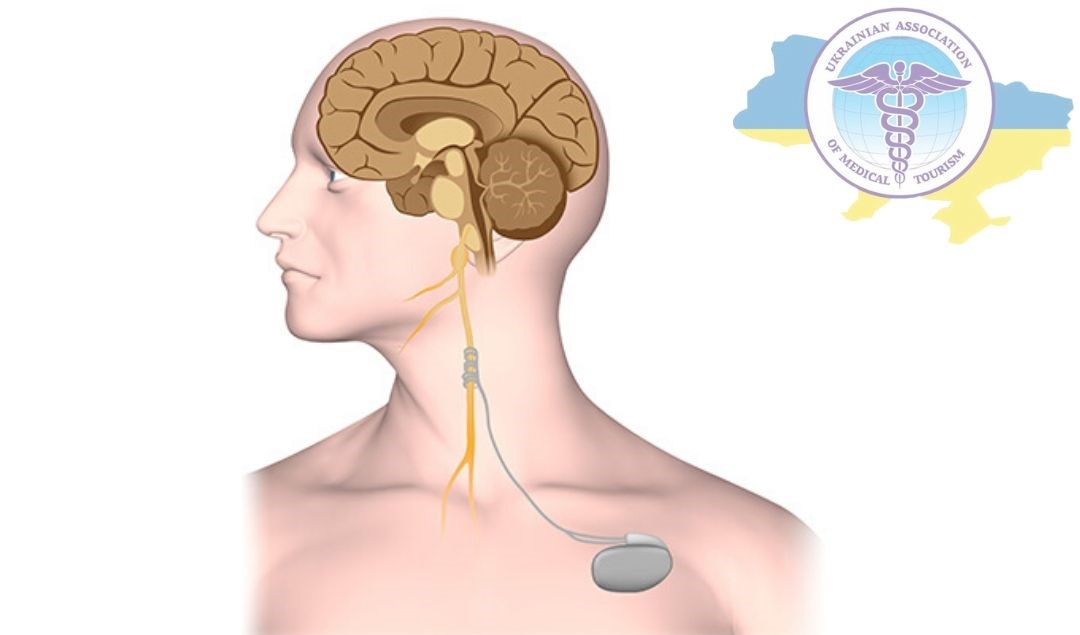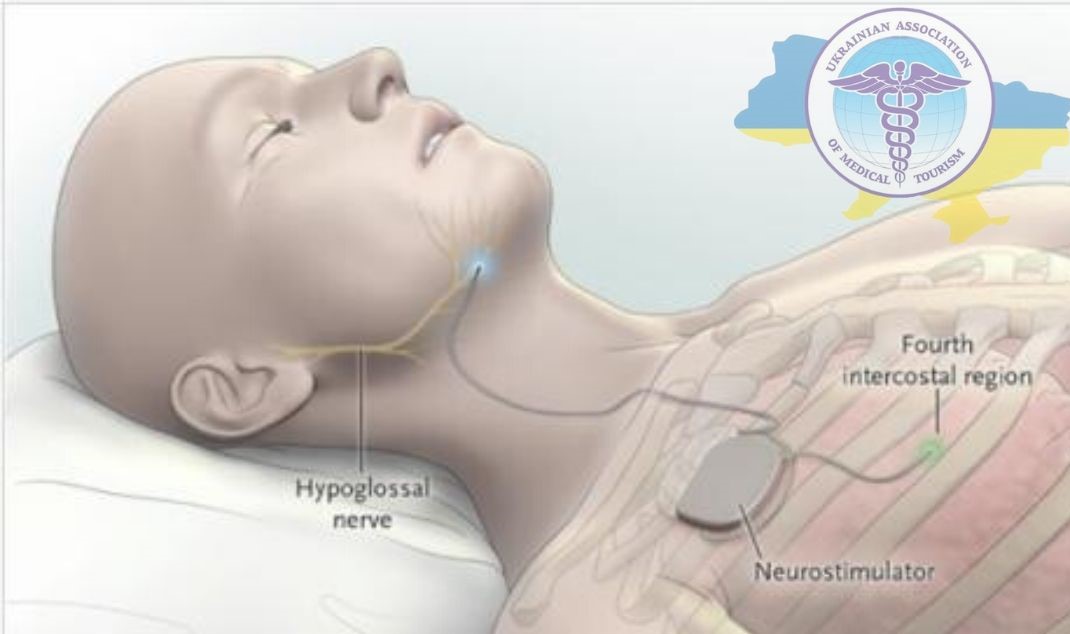Vagus nerve stimulation (VNS therapy) as a advanced method of modern surgical treatment of epilepsy.
VNS Therapy (Vagus nerve stimulation) - vagus neurostimulation is considered as the most common and effective treatment for refractory epilepsy. Vagus stimulation has convincingly proven to be 3 times more effective technique surgical treatment of epilepsy than all previous surgical interventions in history of surgery in epileptology.
Purpose of using VNS therapy
Complete prevention of epileptic seizures and the persistence of persuasive remission is a primary goal of introducing innovative therapy such as vagus stimulation. In initial stages, patient adjusts to life with the VNS stimulator, and in the future can already use it effectively.
Importantly! The patient is able to stop epileptic seizure if it occurs and develops.
It is impossible to imagine such stop when using drug therapy as mono therapy. In the future, patients with refractory epilepsy have opportunity to completely prevent epileptic seizures at aura stage, to achieve stable remission and even recovery. Together with doctor’s support for more precise settings, patient chooses the most favorable mode of operation of the VNS stimulator, for maximum effect of treatment.
What is vagus neurostimulation for patients with epilepsy?

VNS therapy or artificial stimulation of the vagus nerve (Nervus Vagus) is one of the most important nerves of the human body, should be understood by doctors and patients as:
- basic or adjunctive therapy to reduce amount of anti-epileptic drugs used by patient;
- universal treatment for epilepsy, both for adults and children of all ages;
- the most effective and safest operation for epilepsy compared to all existing today;
- implantation of VNS stimulator is a short and relatively simple surgical procedure;
- convenient use.
How does it work? Mechanism of therapeutic effect of vagus stimulation in epilepsy is to implement the action by enhancing the activity of local and regional neurotransmitter systems:
- serotonin;
- norepinephrine;
- gamma-aminobutyric acid.
It stimulates internal anti-epileptic systems and thus reduce the number of seizures and subsequently (though with a low probability - about 8%) can even completely relieve the seizures of epilepsy.
Who needs vagus neurostimulation surgery?
This technique can be applied in the treatment of pharmacoresistant epilepsy. This type of epilepsy is characterized by fact that it is not amenable to medication. When drugs do not bring the desired result, and surgery in the body by the method of skull trepanation is also not advisable, the best option for treatment will be stimulation of the vagus nerve.
Technique for performing Nervus Vagus stimulation surgery

Technique is that vagus nerve is enveloped by electrodes, which allows it to be stimulated if necessary.
The size of VNS stimulator is small like pocket watch, is sutured into the subcutaneous fat of the chest, and the wires from it go to the neck, exactly to the place where vagus nerve is most accessible for surgery.
After implantation, device is programmed in several stages, for maximum efficiency.
Impulses that vagus nerve receives from VNS stimulator are sent to the brain and prevent the onset of epileptic seizures.
In general, surgery for VNS stimulation is much more optimistically predicted from the point of view of complications, more effective and less traumatic, compared to the previous methods of surgical treatment of refractory epilepsy, which were in the daily work of neurosurgeons until the advent of VNS therapy.
History of VNS stimulation

Suggestion that vagus nerve stimulation may prevent epileptic seizures was first tested for dogs. Test was conducted by American neurophysiologist J. Zabara, and for the first time installed a vagus stimulator to the man J. Penry, who noted the positive effect of vagus nerve stimulation in patients with epilepsy.
In the future, scientists and modern medicine have convincingly demonstrated that patients with drug-resistant epilepsy stimulate the vagus nerve leads to stable remissions in the form of decrease frequency or complete cessation of seizures.
How much does VNS therapy cost?

Price is always determined individually, depending on workload, patient status, type of epilepsy and presence of aggravating factors. Currently, VNS therapy costs approximately from $17,000 to $40,000 and requires careful prior study and selection of treatment regimens for each patient. Price depends on experience of doctor, implant model, the nuances of surgery, care, time in the clinic. Also, the cost of VNS therapy depends on the country and level of equipment and the clinic itself.
The patient will also need to visit his neurologist regularly to check for VNS stimulator, which also affects on total cost of VNS therapy.
Get a free consultation on how to install a VNS stimulator and determine the cost of treatment. To do this, fill out an application.
Where can surgical treatment of refractory epilepsy be performed by vagus neurostimulation?
Now such operations are performed in many countries around the World. Highly professional doctors-epileptologists are from countries as
- Germany;
- Israel;
- Spain;
- Turkey;
- South Korea.
and many others also conduct VNS therapy and record successful outcomes and sustained remission. We remind that UAMT members are clinics from 15 countries of the world. So, the best choice for the patient will be found!


